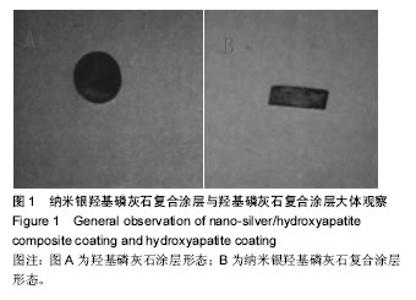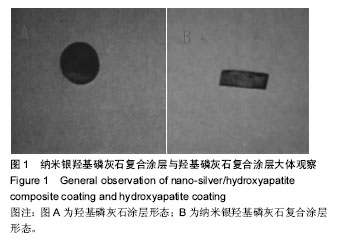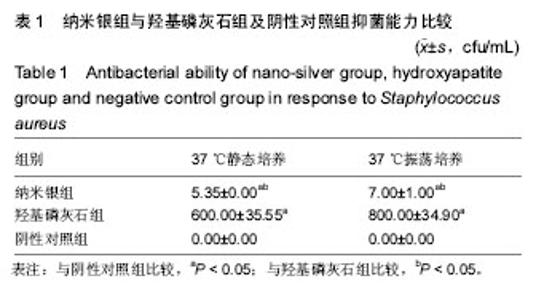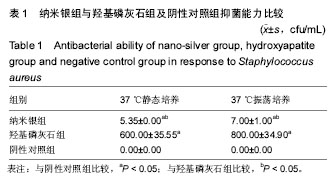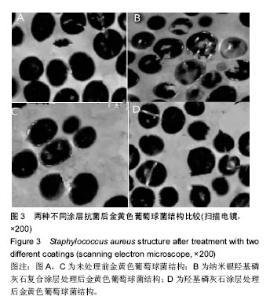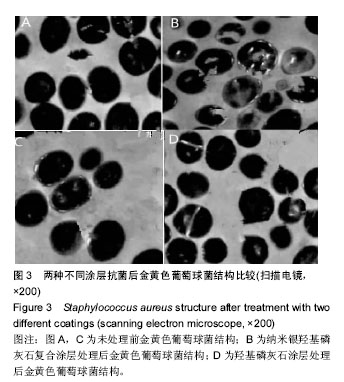| [1] |
Ma Jinchao, Liu Tiansheng, Liu Aipeng, Wang Hao, Wang Qi, Liang Yongjian, Wang Lin, Di Haiwei.
Photodynamic antimicrobial chemotherapy for repairing a
rabbit model of osteomyelitis
[J]. Chinese Journal of Tissue Engineering Research, 2020, 24(8): 1254-1259.
|
| [2] |
Liu Jinyue, Zhang Mengqi, Qing Mingsong, Zhao Chuntao, Peng Jiachen.
Research progress in constructing animal models of Staphylococcus aureus-associated
osteomyelitis
[J]. Chinese Journal of Tissue Engineering Research, 2020, 24(14): 2256-2262.
|
| [3] |
Zhang Lei, Zhang Hangzhou, Allieu Kamara.
Titanium-copper alloys with nanotubular coatings increase antibacterial abilities and osteoblast functions
[J]. Chinese Journal of Tissue Engineering Research, 2019, 23(2): 165-171.
|
| [4] |
Chen Wei-hua, Lv Guo-hua, Zhou Bin, Kang Yi-jun.
Establishment of a dog model of pyogenic spinal infection
[J]. Chinese Journal of Tissue Engineering Research, 2016, 20(40): 6014-6020.
|
| [5] |
Liu Yu-qiang, Wang Li, Li Xiao-ling, Liu Zheng-xiang, Yuan Wen-chang.
Molecular typing and antimicrobial susceptibility of Staphylococcus aureus isolates from a burn ward
[J]. Chinese Journal of Tissue Engineering Research, 2016, 20(37): 5567-5572.
|
| [6] |
Wei Wei, Li Xiao-ling, Yuan Wen-chang.
Construction and application of Staphylococcus aureus gene knockout plasmid
[J]. Chinese Journal of Tissue Engineering Research, 2015, 19(5): 799-804.
|
| [7] |
Shen You-liang, Zhu Tong-e, Zhang Jing-jing, Qi Chao, Yu Teng-bo.
Construction of a rabbit model of knee prosthesis infection: environmental factors in vivo affect Staphylococcus epidermidis and biofilms
[J]. Chinese Journal of Tissue Engineering Research, 2015, 19(39): 6240-6245.
|
| [8] |
Xian Ai-ming, Zhang Xiao-gang, Cao Li, Xu En-jie, Peng Li-bin, Hu Yang.
In vitro antibacterial activity and biological safety of nano-silver composite coating on the surface of titanium base
[J]. Chinese Journal of Tissue Engineering Research, 2014, 18(52): 8387-8392.
|
| [9] |
Wang Xiao-dong, Zhang Yong-hong.
Preparation and performance of recombinant human bone morphogenetic protein-2-poly(hydroxybutyrate-co-hydroxyoctanoate) nanospheres
[J]. Chinese Journal of Tissue Engineering Research, 2014, 18(52): 8405-8408.
|
| [10] |
Xing Qing-chang, Hao Li-bo, Wang Ji-fang.
RNAIII inhibiting peptide suppresses the adhesion of staphylococcus epidermis on the Hela cells
[J]. Chinese Journal of Tissue Engineering Research, 2014, 18(44): 7183-7187.
|
| [11] |
Zhu Yan, Li Wen-lin, Zeng Li, Mao Chun-qin, Wang Xiao-wen.
Optimal dose of Ligustrazine nanoparticles in a rat model of experimental peritoneal adhesion
[J]. Chinese Journal of Tissue Engineering Research, 2014, 18(36): 5799-5804.
|
| [12] |
Lu Jian, Chen Wei-hua, Chen Fei, Lu Chang, Dai Zhe-hao, Zhou Bin, Wang Guo-qiang, Kang Yi-jun.
Criteria and implant treatment for pyogenic spinal infection in dogs
[J]. Chinese Journal of Tissue Engineering Research, 2014, 18(27): 4330-4338.
|
| [13] |
Zhang Wei, Zhang Li-cheng, Zhang Li-hai, Wei Jun-qiang, Tang Pei-fu .
Modification of superhydrophobic surface of TiAl6Vi4 and its bacteriostatic action in vitro
[J]. Chinese Journal of Tissue Engineering Research, 2014, 18(21): 3322-3328.
|
| [14] |
Li Zeng-yao, Wang Tong.
Silicon nanowire biosensor in detecting tumor markers
[J]. Chinese Journal of Tissue Engineering Research, 2013, 17(47): 8248-8254.
|
| [15] |
Zhang Hang-zhou, Wang Lin, Tian Ang, Sun Yu, Bai Xi-zhuang, Xue Xiang-xin.
Research progress and clinical practice of TiO2 nanotubes
[J]. Chinese Journal of Tissue Engineering Research, 2013, 17(47): 8255-8262.
|
